Milling is one of the most commonly used processes in the metal manufacturing industry today. It is used to produce some of the most common and important products we use every day. Milling is the use of rotating cutting tools to remove material from a fixed workpiece. During milling, the workpiece remains stationary while the cutting tool rotates. When the rotating cutting tool is pressed against the workpiece, it will remove material. ( What is CNC Milling, all about CNC Milling )
Although all milling machining follow the same basic formula, the types of milling machining are different. Each type of milling machine has its own unique characteristics. Each type of machine has its own specific shortcomings and advantages, usually divided into vertical Machining center and horizontal machining center. In this article, we will discuss horizontal milling machining and vertical milling machining and the difference between them.
What is Vertical Milling?
Vertical milling machines are the most commonly used type, with a vertical cutting head or spindle that holds the cutting tool and rotates it relative to the workpiece. Since the cutting head is fixed vertically, other machine parts will move along a single or multiple axes to move the material to the correct position for correct milling. The spindle will move up and down to remove material by pressing on the workpiece.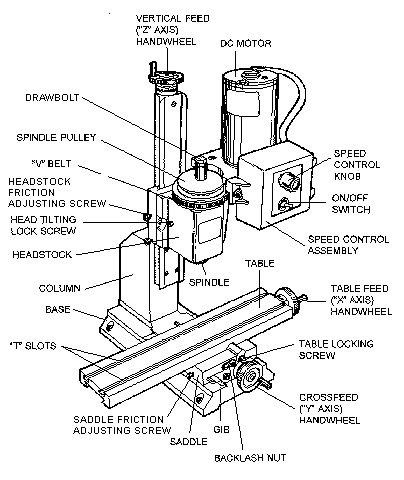
Vertical mills are ideal for single-sided projects, such as operations with large metal plates and countersunk molds. There are basically two types of vertical milling machines: Bed Milling And Turret Milling-with different functions and unique advantages.
Turret Milling:
The spindle and worktable can move perpendicularly and parallel to the axis. Considering that it can manipulate the position of the material in two directions, the turret milling machine is very versatile. In fact, most manufacturing plants invest in turret milling machines because of their ability to perform multiple milling operations. The main disadvantage of turret milling machines is that it becomes impractical to assemble larger blocks on a rotating bed. However, these rolling mills are generally limited to items related to smaller parts, because for larger parts, two-axis motion can be difficult.
Bed Milling:
For larger parts, most stores turn to bed mills. In some milling machines, the spindle can be raised or lowered, or moved back and forth (x and y axes) as the workpiece moves along the bed. The spindle movement is combined with the horizontal movement of the worktable to mill various depths and shapes. Compared with turret mills, this mill is very suitable for projects that require large and heavy workpieces.
Vertical Milling – Pros & Cons
The Pros
Popularity:
Vertical machining centers constitute the vast majority of milling machines in the entire industry. Their cost is generally lower than horizontal machining centers, which makes them a smart investment. Because these types of rolling mills are very common, more and more skilled operators are equipped with the ability to use these machines throughout the industry.
Easy to operate:
Due to the structural design of VMC, operators have greater visibility when using these machines. This makes it easier for operators to find and correct potential problems in the milling process. User-friendly CNC controls make programming easy. This means that operators can spend less time setting up and programming, and more time can be devoted to ensuring that the project’s specifications are met while meeting the highest expectations.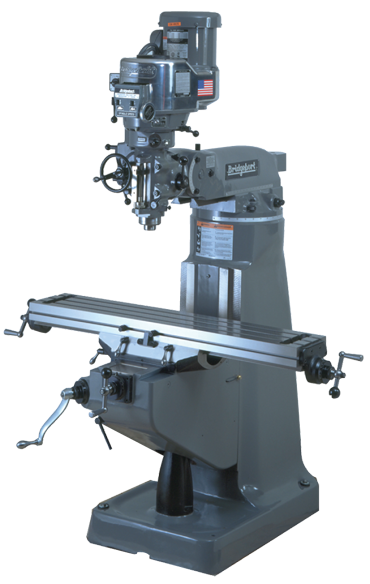
Production Benefits:
The visibility provided by VMC is very suitable for the manufacture of large plates. Due to its ease of use, VMC is an ideal choice for less complex jobs that require a smaller number of. For fast milling operations, these machines are the ideal solution.
Save Cost:
Due to the smaller casing and fewer complex internal parts, the cost of the machine and the project you complete on the vertical mill is lower than that of the vertical mill. Their lower upfront costs usually mean passing on production cost savings to customers.
Simplicity:
The vertical mill does not require additional fixtures, and the operation and maintenance are relatively simple. The smaller the learning curve, the shorter the downtime.
Availability:
Since vertical milling machines are more common, you can easily find the parts or repair help you need later. This availability is especially useful if you need to find a milling machine and start using it quickly, as they are usually the easiest to obtain.
Space:
Compared with horizontal milling machines, vertical milling machines take up less floor space. For the owner of a small shop, this means you have more work space or place other machinery.
Low investment:
Because they are easy to use and do not require a large initial investment like horizontal milling machines, vertical milling machines may be ideal for people who are new to milling or companies that are just starting out.
The Cons
Vertical milling machines generally cannot compete with horizontal milling machines in terms of production output. They are not the best choice in terms of time and cost efficiency for large and more complex processing operations.
Compared with horizontal milling machines, they usually have a lower horsepower motor and do not provide such a fast output rate.
For vertical machines, heavier materials may also be a problem because they may be difficult to raise and lower.
What is Horizontal Milling?
Compared with vertical milling machines, horizontal milling machines do not use a fixed spindle. Instead, they use a cutting head similar to a small circular saw mounted on a horizontal spindle.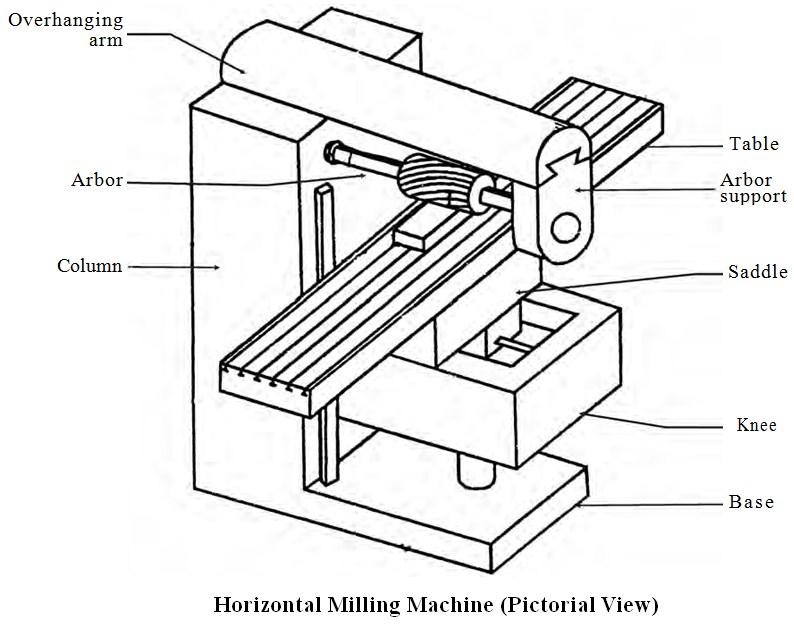
On a horizontal milling machine, the main shaft runs parallel to the ground, and a smaller but thicker cutting head is used to press against the item and remove material. Due to the structure of the horizontal milling machine, they can use multiple milling cutters at different angles. This means that they can perform complex multi-sided processing of materials.
In addition, the horizontal milling machine can move in a wider range of the entire bed, so that longer and heavier parts can be processed in one operation.
Horizontal Milling – Pros & Cons
The Pros
Chip Removal:
Due to the setting of the horizontal milling machine, gravity helps to pull the chips out during the cutting process. It is more conducive to better surface finish and longer tool life.
Robust Structure:
The horizontal rolling mill is heavier in construction and can handle larger batches of production. Under a certain working pressure, the structure of each machine part can extend the service life. Compared with vertical mills, this robust structure means that the machine has less vibration, less deflection and more stable operation.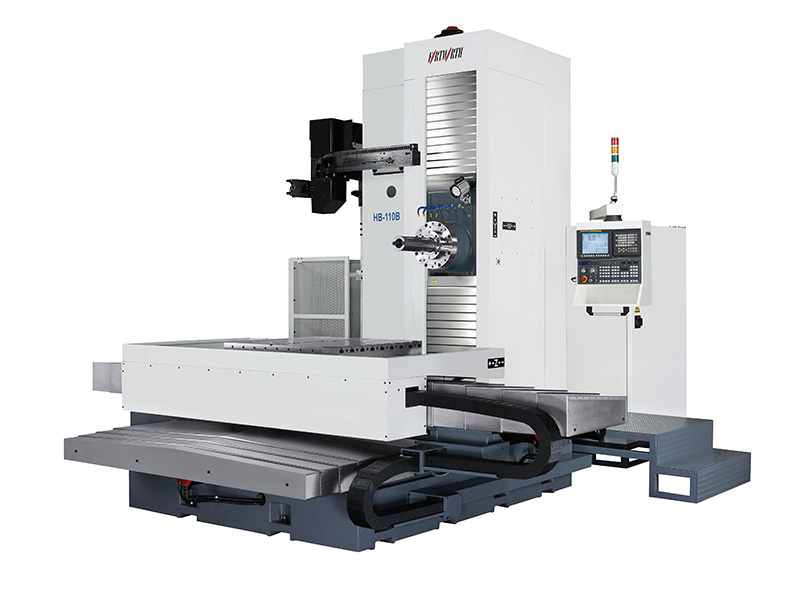
Productivity:
Thanks to the 4-axis tombstone and integrated pallet changer, these machines increase productivity. This feature is very suitable for complex and large workloads. Due to the mechanical design, a horizontal milling machine can perform up to three separate processing tools. This is an ideal choice for production cost and time efficiency.
Part Complexity:
Horizontal mills are the first choice for more complex projects. These machines are more versatile than vertical machines and can work on more sides. They are also suitable for heavier items and it is desirable to cut one or more grooves with one material. Horizontal rolling mills are also more inclined to create slots. They are suitable for heavier materials.
The machine can also provide additional cutters for various applications, especially for more effective insertion into grooves. On some horizontal milling machines, the bed can be rotated to achieve milling at multiple angles instead of strictly milling on the horizontal plane.
Speed:
If you need a machine with high output and fast turnaround time, the cutting speed of a horizontal milling machine will be faster than that of a vertical milling machine, and it can even cut more than one at a time. This speed does not reduce its accuracy at all, so they are powerful tools for detailed or long-running projects.
Capacity:
Horizontal milling machines have greater production capacity than vertical milling machines. They can easily handle large, bulky or heavy objects, and can perform deeper cuts. They can also help you complete complex or multifaceted projects.
Durability:
Because horizontal milling machines can handle more bulky materials, they are durable.
The Cons
Although horizontal machines have their advantages, one possible disadvantage is cost. These costs may be three to four times that of a vertical mill.
Horizontal milling machines may also be more difficult to monitor, because the components are blocked and the project’s line of sight is limited by the design. They are also larger, making them more difficult to place in limited workspaces.
Another factor worth considering is that these milling machines are not as common as vertical milling machines, so finding parts or skilled labor can be more challenging if needed.
Horizontal milling machines will take up more space than vertical milling machines. If you have limited floor space, but still need the speed and physical capabilities of a horizontal machine, consider working with an external part manufacturer.
The Difference Between Vertical Milling and Horizontal Milling
There are many differences between a horizontal mill and a vertical mill. The significant difference between these two milling machines is the spindle direction. The vertical milling machine has a vertical spindle orientation. For horizontal milling machines, the spindle has a horizontal direction.
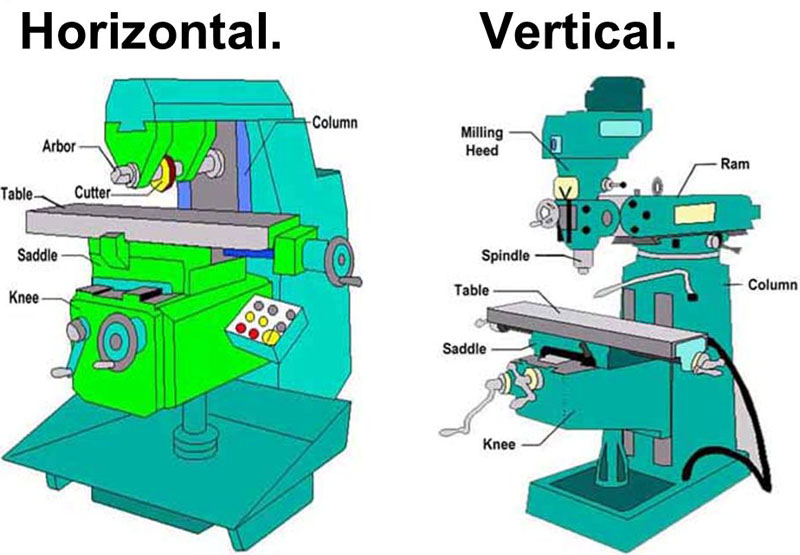
In addition, compared with the vertical milling machine, the horizontal milling machine has a variety of cutting tools. Whereas vertical mills have slender vertical cutting tools, horizontal mills have thicker and shorter cutting tools. Compared with vertical milling machines, horizontal milling machines can perform heavier and deeper cuts.
Horizontal milling machines can perform heavier and deeper cuts than vertical milling machines. As a result, manufacturing companies often use them to cut grooves or slits in workpieces. Hope this can give you a better understanding of the difference between vertical milling and horizontal milling.
Choosing Between Vertical and Horizontal
As you know, both types of milling machines have their advantages, and the choice between the two depends entirely on the type of milling that needs to be done. The number of planes that need to be processed and the shape and size of the workpiece are the main factors that determine whether milling is more suitable for vertical milling or horizontal milling.
Size: If you want to deal with large projects or projects involving heavy objects or bulky materials, a horizontal milling machine may be a better choice. This is also true for projects where parts need to be cut on multiple sides.
Shape: The shape of the project material is a key factor to consider. If the material is too large or the shape is strange, please choose the most suitable machine.
Time: If you use a milling machine to complete daily tasks or long-term projects that require regular, fast turnaround time, a horizontal milling machine is the ideal choice. For projects where time is less urgent, the vertical machine is a good choice because it is easy to use and affordable
Budget: The initial investment of a vertical milling machine is usually smaller than that of a horizontal milling machine, making it ideal for companies with tight budgets.
As seen, both the machines have certain benefits, and thus the choice will entirely depend on the kind of milling you wish to do. If you are unable to make a decision on this, it is always better to approach an industry expert. If you have related problem, you can contact us for free quotation.


